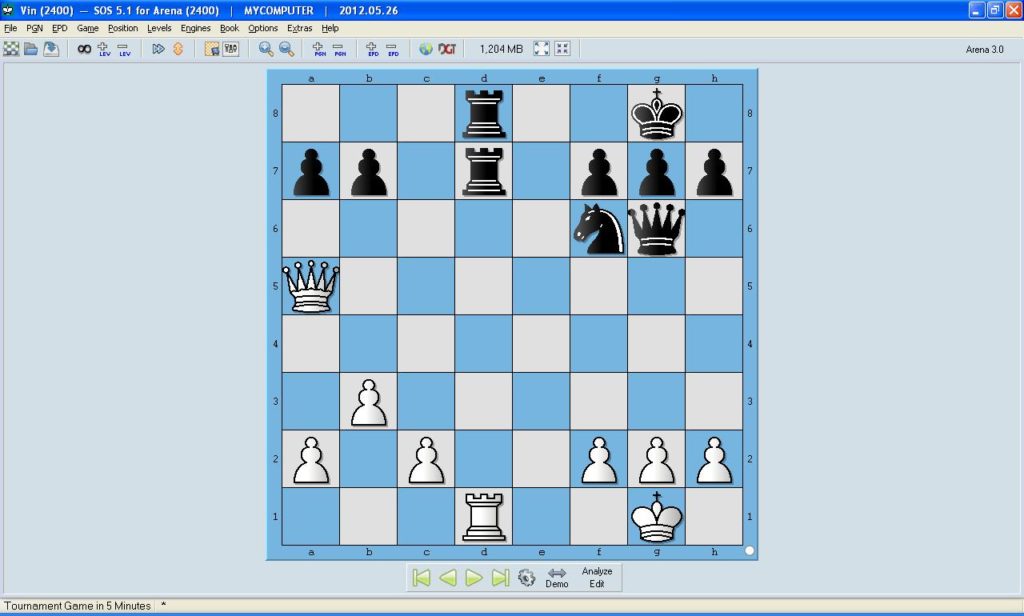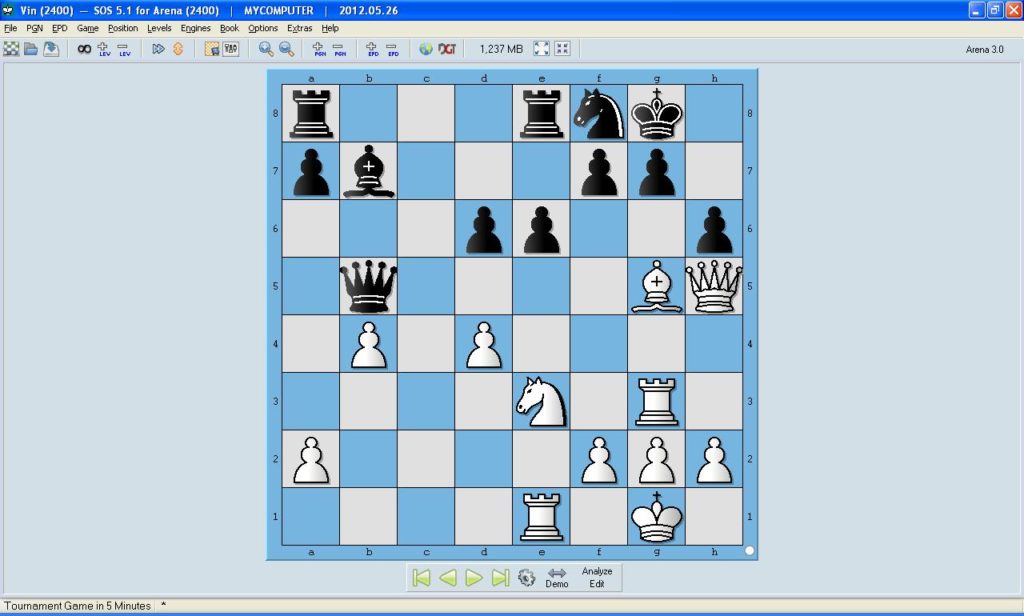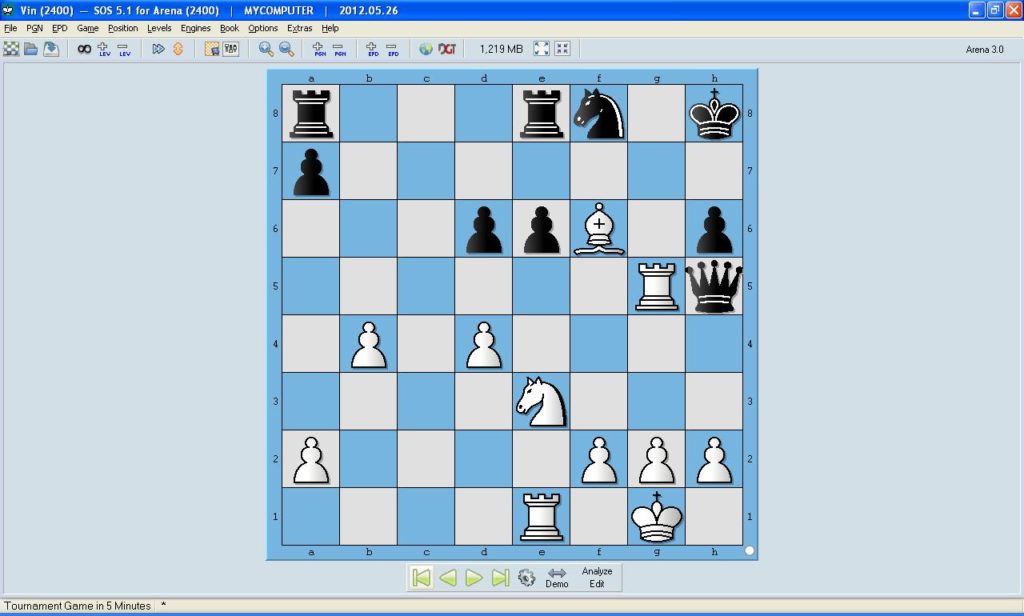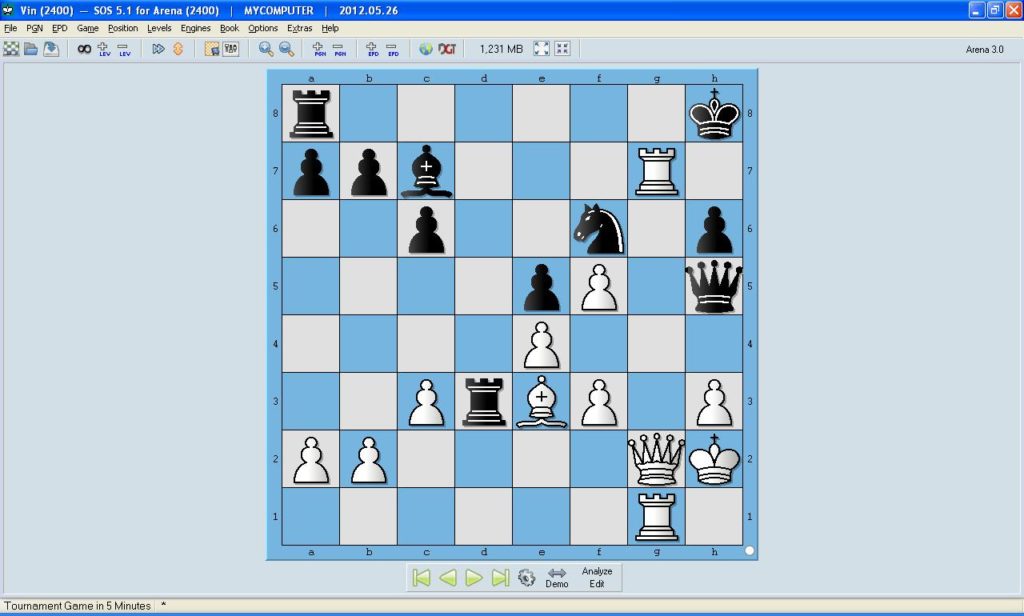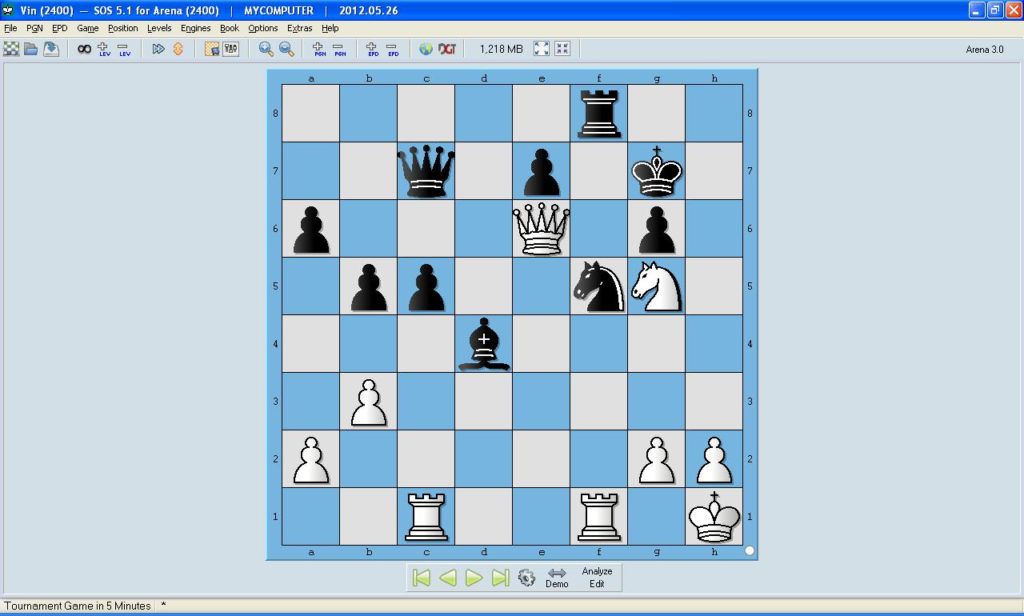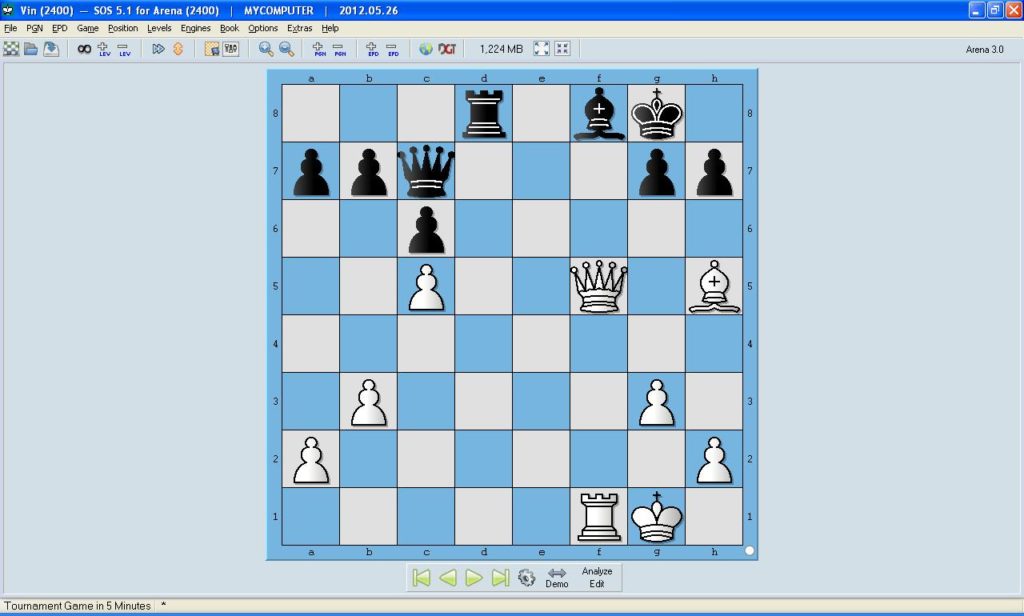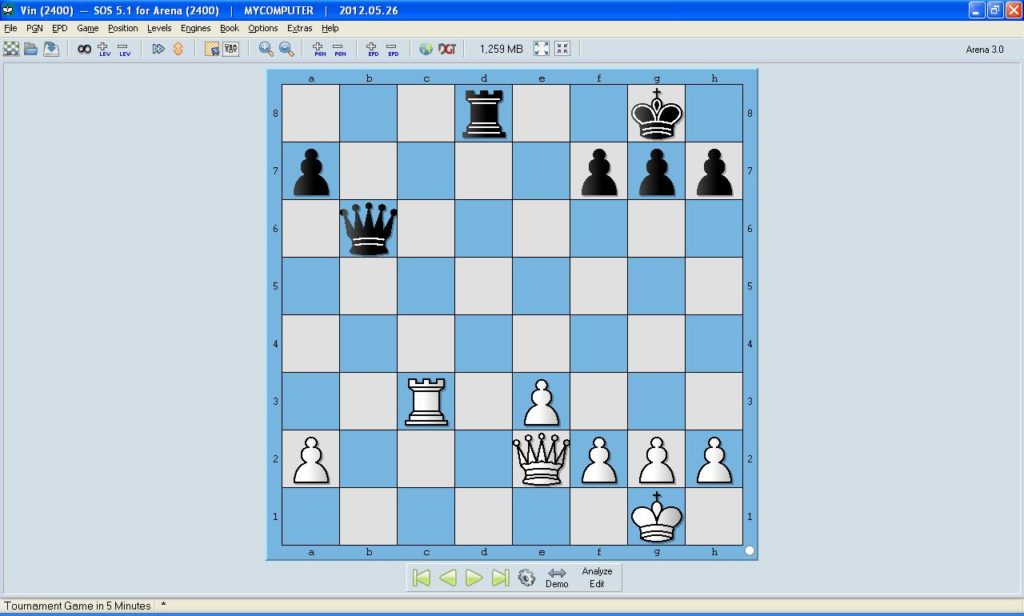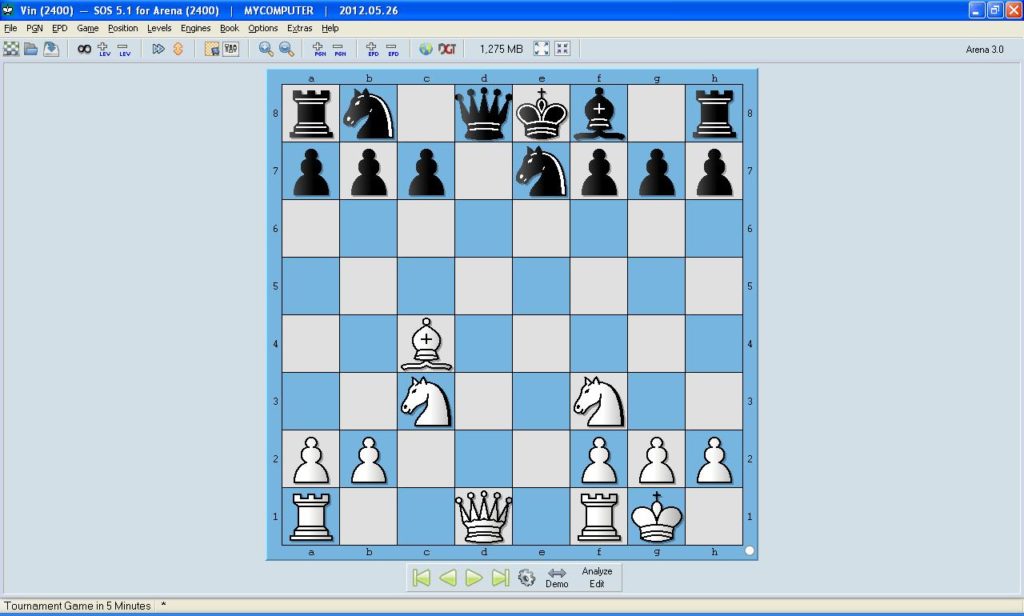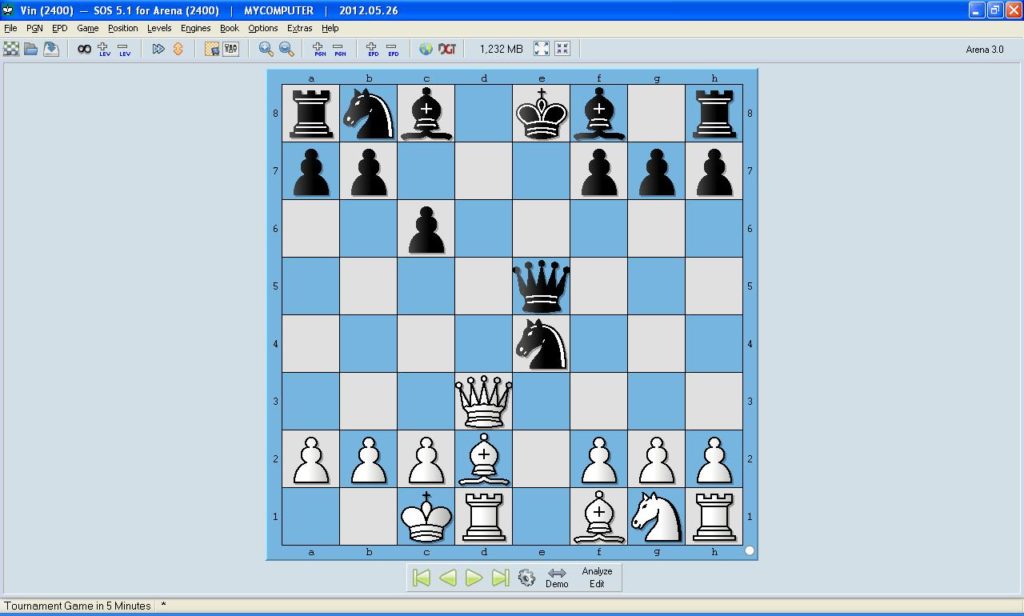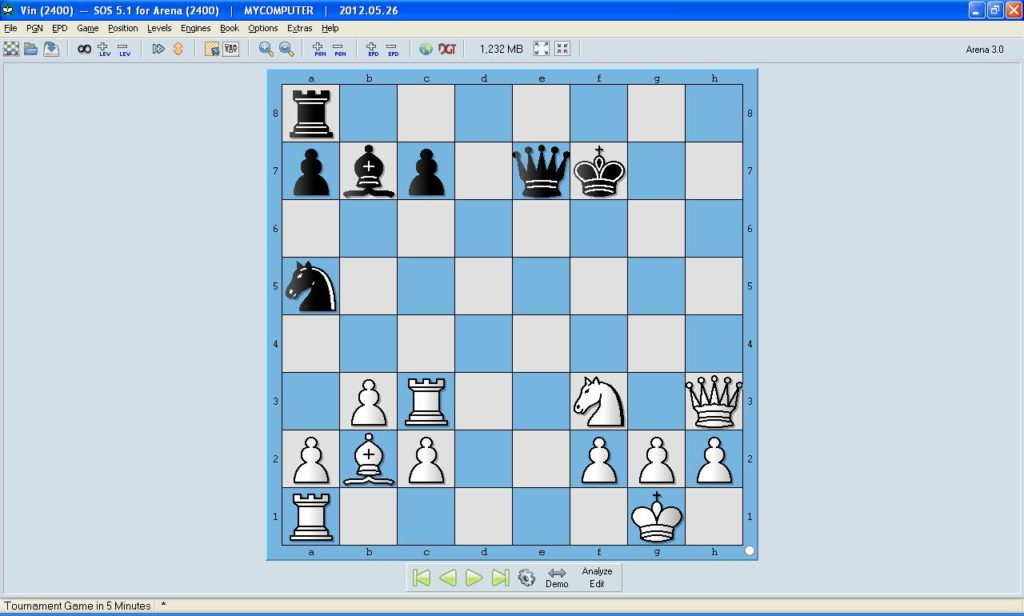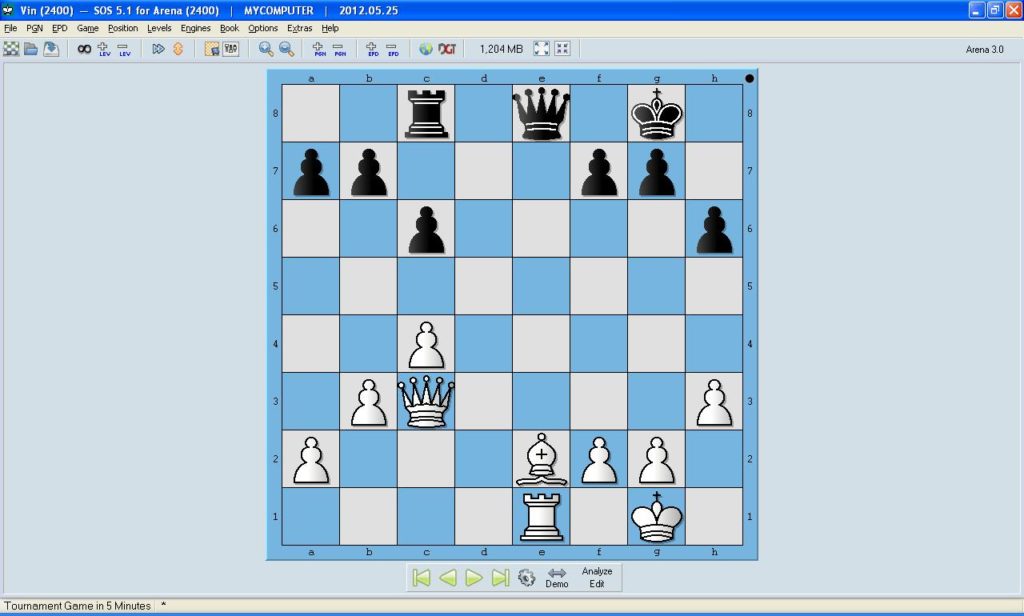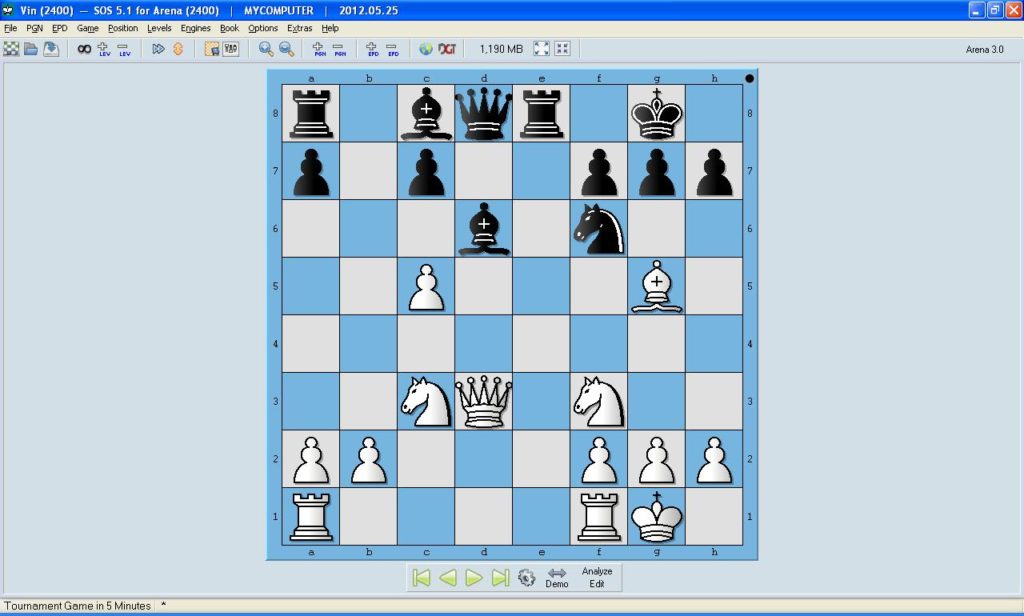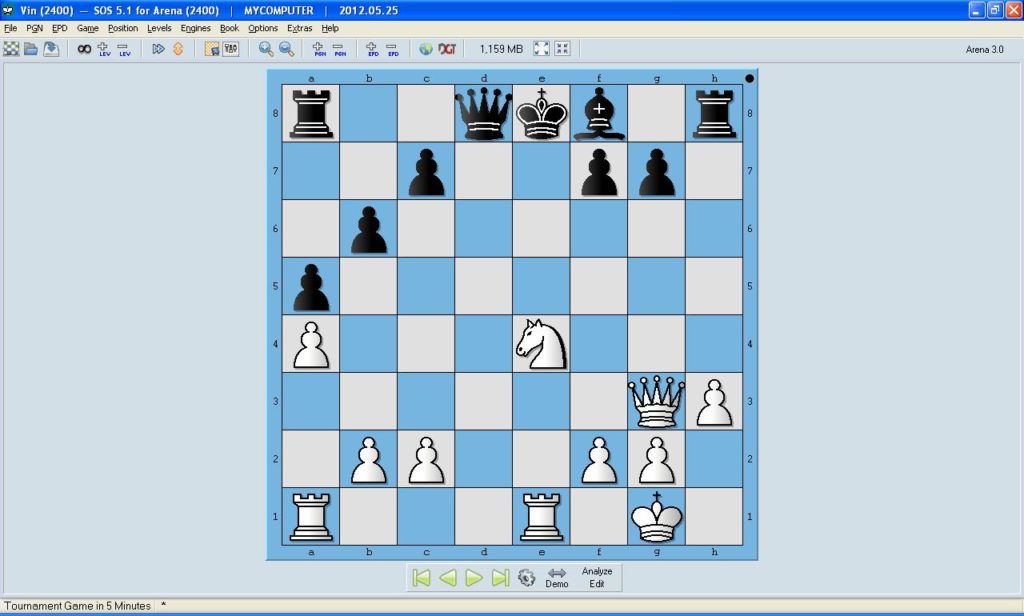During the last few weeks we have been learning basic tactics. In this post I’m going to change the pace a bit and write a few words on topics that I believe are overlooked in competitive activities.
Besides chess I have several other hobbies. Many of these are hobbies that I have dedicated myself to for many years. Over the years I’ve noticed that the things that hold people back from improving are almost always the same no matter what the activity.
First and foremost many people underestimate the time required to become proficient. They’ll take up chess, play for a few months, realize it’s difficult, and then quit. It’s important to realize that there is a direct correlation between time invested and skill level. I’m sure if there were studies done, we would find that most grandmasters have studied more than masters, who have studied more than experts etc. etc.
The second thing that holds many people back is the failure to practice correctly. The way to improve your skill level is to put yourself in uncomfortable situations where you are forced to adapt. You must increase the difficulty level and push yourself. If you are studying a tactical problem and the answer doesn’t come to you study it further. The corrolary to this to get out of your comfort zone and practice playing positions that you are uncomfortable with. For example, if you primarily play 1. e4, try playing 1. d4 for several games. We must work on our weaknesses if we want to be complete. This is true in chess or anything else.
The fear of losing is also something that can hold someone back. My answer to this is to lose your ego. Even the best players in the world lose sometimes. What separates people is the ability to come back and keep fighting.
The last thing I want to say is that it’s you and only you who can determine your potential. For someone who really wants to do something there’s nothing holding them back. A lot of people want certain things, but they aren’t willing to change or put in the hard work to get there. When you feel like quitting say to yourself; I have to keep going no matter what. Chess history is filled with games where a player turned around a losing position to win or draw. History is filled with examples of people coming back from extremely difficult situations and succeeding. Use these examples as inspiration, and remember, never stop, just keep going.











